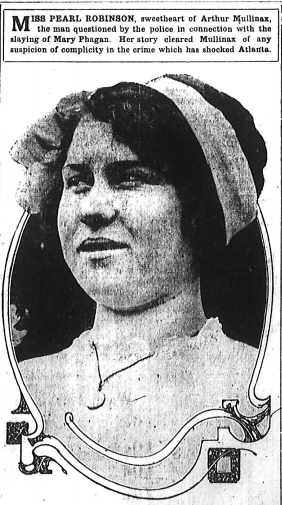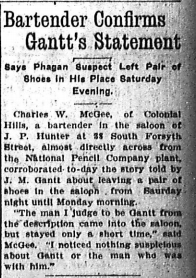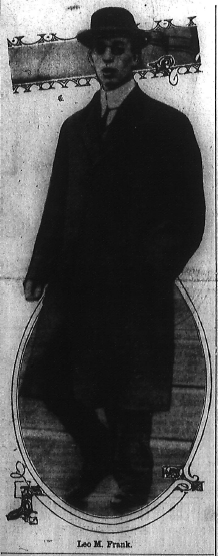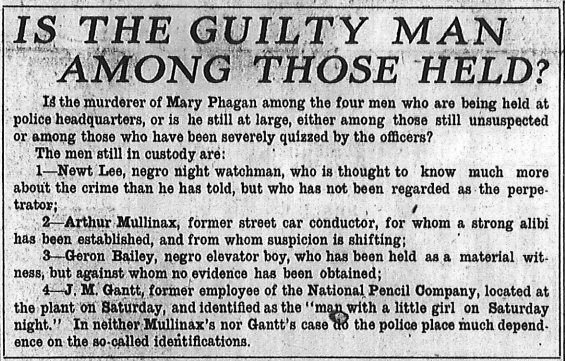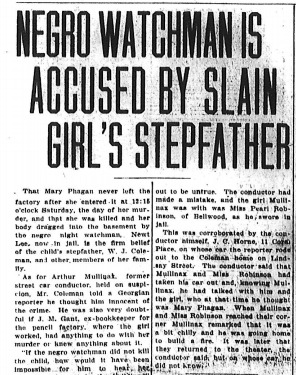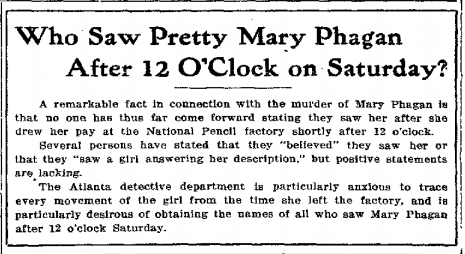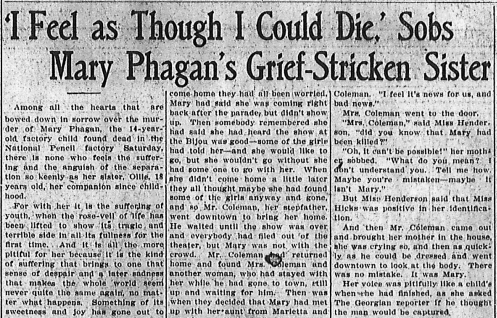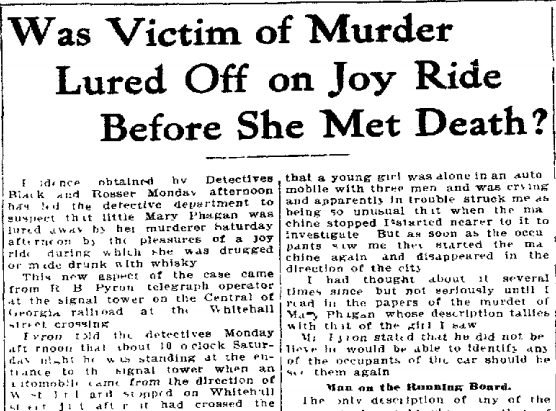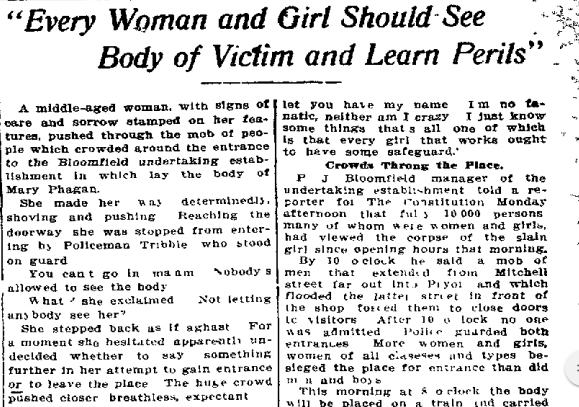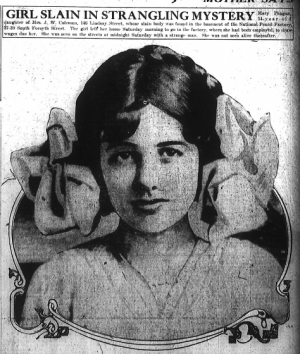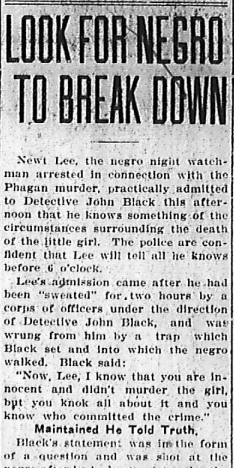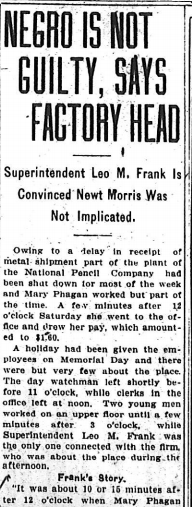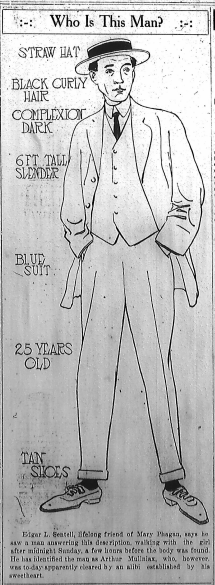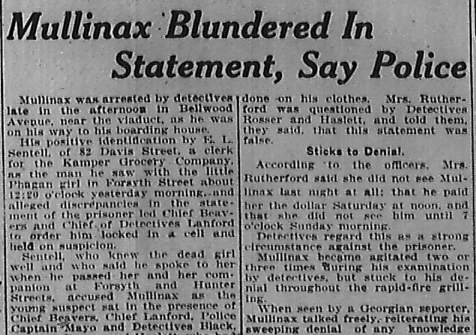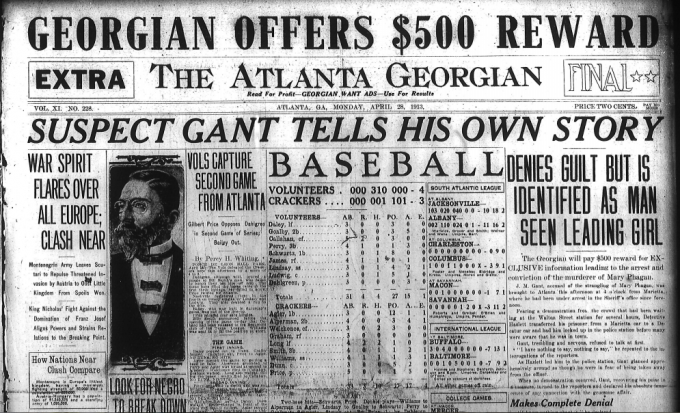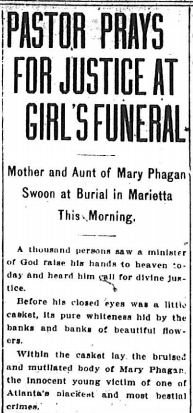 Another in our series of new transcriptions of contemporary articles on the Leo Frank case.
Another in our series of new transcriptions of contemporary articles on the Leo Frank case.
Atlanta Georgian
Tuesday, April 29th, 1913
Mother and Aunt of Mary Phagan Swoon at Burial in Marietta This Morning.
A thousand persons saw a minister of God raise his hands to heaven to-day and heard him call for divine justice.
Before his closed eyes was a little casket, its pure whiteness hid by the banks and banks of beautiful flowers.
Within the casket lay the bruised and mutilated body of Mary Phagan, the innocent young victim of one of Atlanta’s blackest and most bestial crimes.
The spirit of the terrible tragedy filled the air. An aunt of the strangled girl suddenly screamed, fell over in her seat and was carried from the church in a swoon from which she did not fully recover for hours.
The stricken mother collapsed and it was feared that her condition might become critical.
The scene was in the Second Baptist Church at Marietta, where Mary Phagan had lived when she was a child of only three or four years. An immense crowd was at the station when the funeral train arrived at 10 o’clock. Many of them were young people who had played about with the strangled victim when she had lived there years before. Continue Reading →

